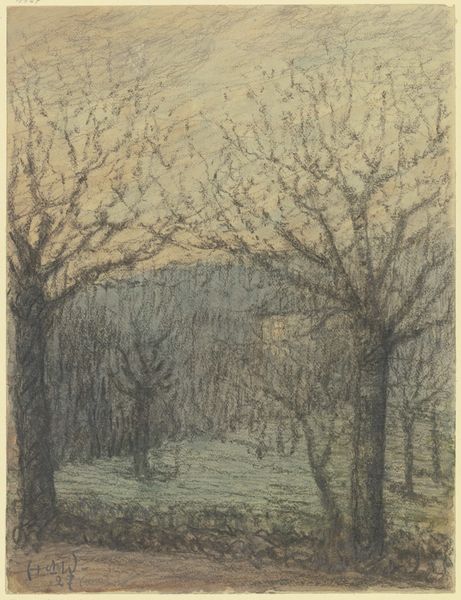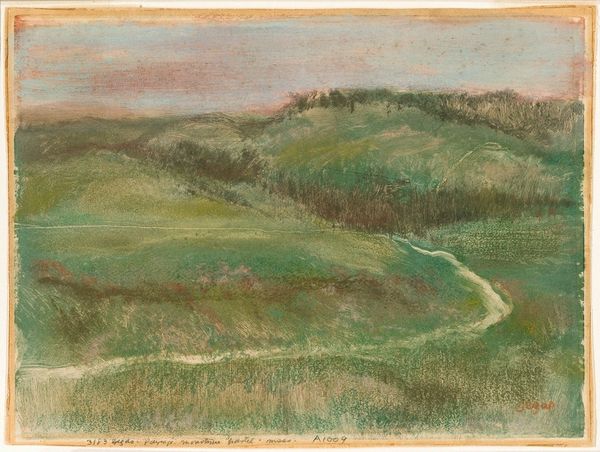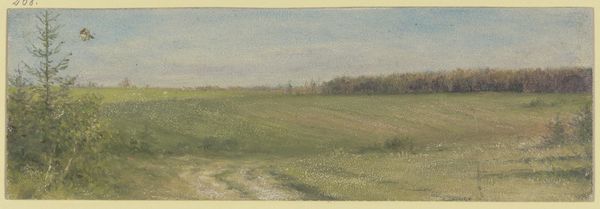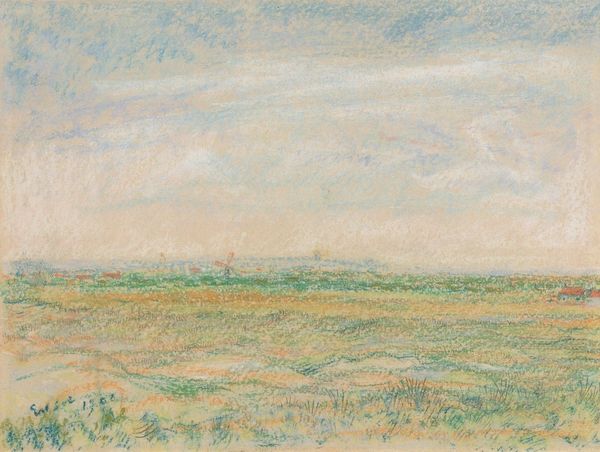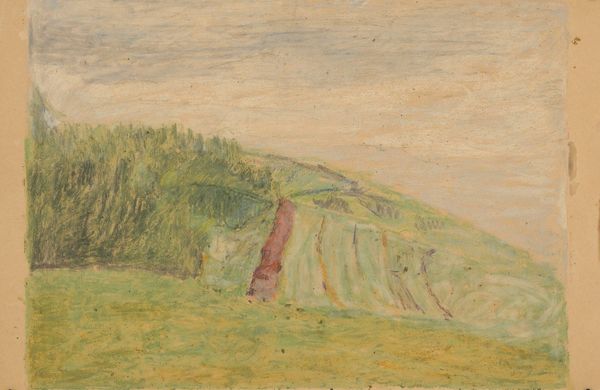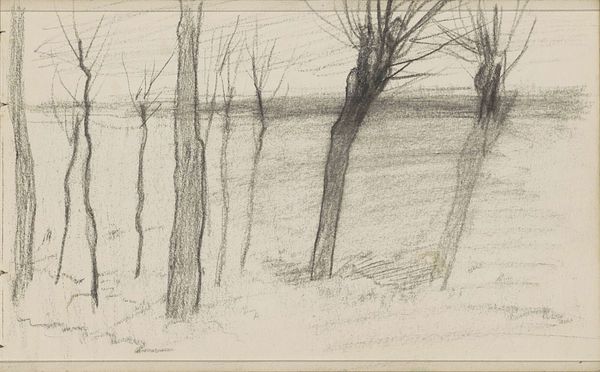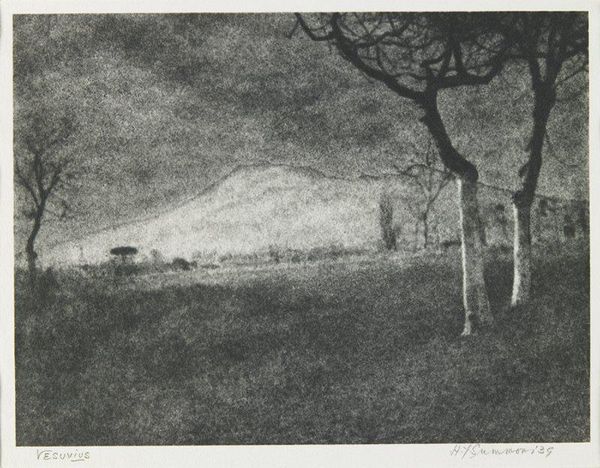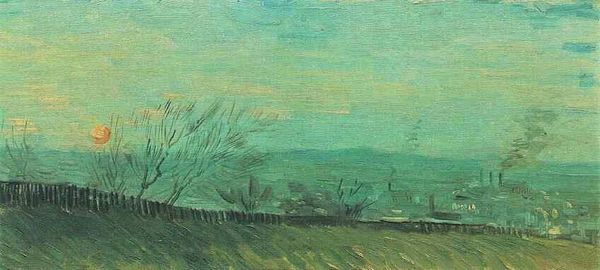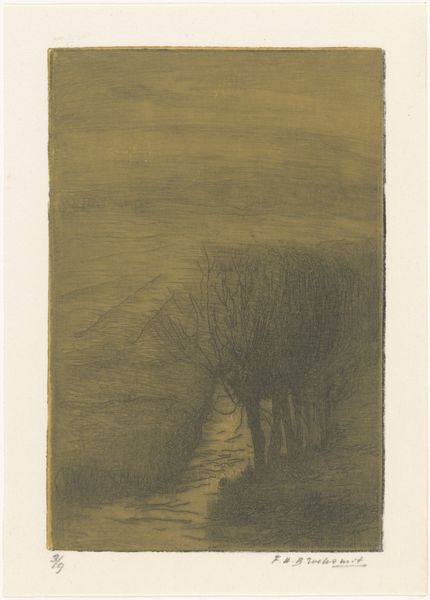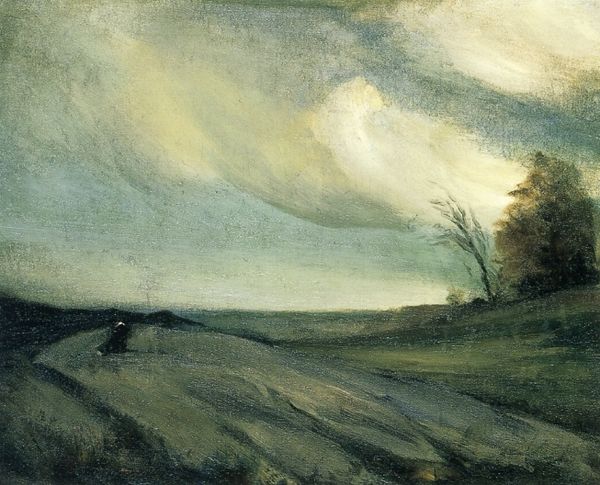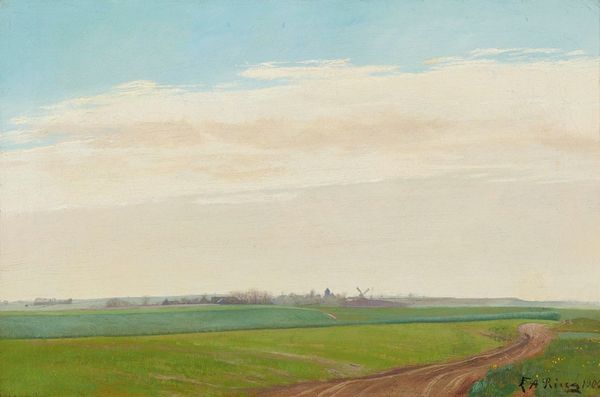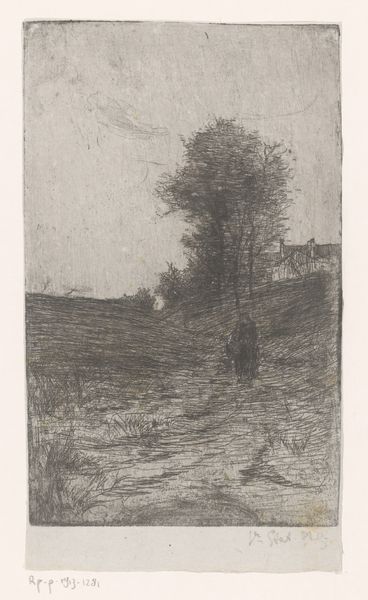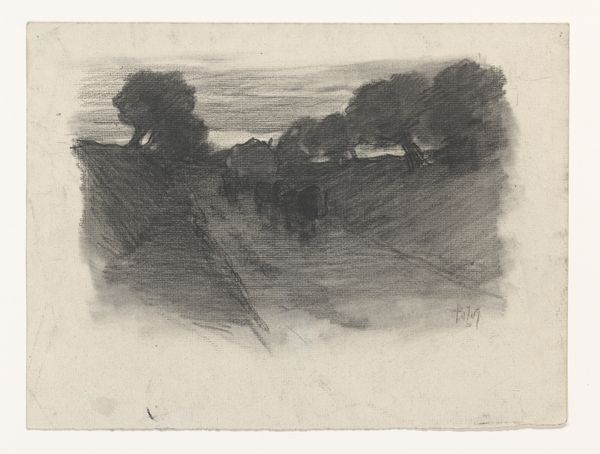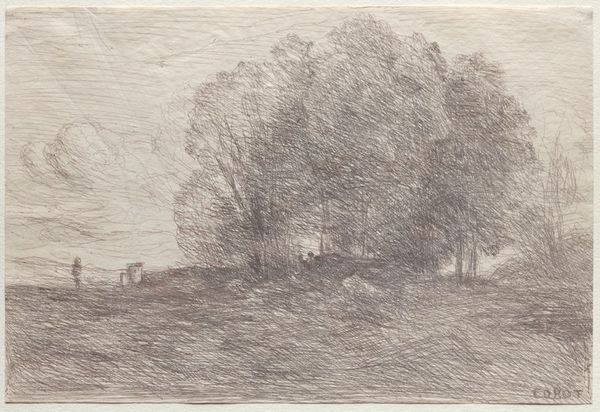
plein-air, dry-media, pencil, pastel
#
impressionism
#
plein-air
#
landscape
#
dry-media
#
pencil
#
pastel
Copyright: Public Domain: Artvee
Editor: So, here we have "The Meadow," created by Georges Seurat around 1881, using pencil and pastel. It’s strikingly simple; just a sloping green field, some trees, and an overcast sky. It feels…unfinished almost? What do you see in this piece? Curator: I see a quiet resistance. Seurat, known for pointillism, is often categorized solely by his technique, but in this seemingly simple landscape, he's subtly engaging with the dominant academic landscape tradition. He uses pastel, a medium often associated with more delicate or ‘feminine’ subjects, to depict… a field. But consider this: whose meadow is it? How is land ownership represented, or erased, in 19th century landscape art? Editor: That’s a perspective I hadn't considered! I was so focused on the artistic technique and the surface level representation of nature. Curator: Exactly! Seurat wasn't just capturing a pretty scene. The solitary pole, the undetailed houses, they all point to the social structures quietly shaping the land. What’s visible, and what’s deliberately left vague? Who has access to this "meadow?" Consider how industrialization and urbanization pushed against rural life at this time, disrupting traditional agricultural practices. Editor: So, it's a statement about land use and maybe even class, hidden within an impressionistic landscape? Curator: Precisely. And the very act of rendering this scene “en plein air” implies a claim, a presence, within that space. The “unfinished” quality might be an active choice, mirroring the incomplete nature of social progress and the continuous negotiation of power within the landscape itself. What do you think of the way class affects landscape as a genre now? Editor: I always looked at impressionism as being divorced from the realities of everyday people. Now I wonder how much it hid! Thanks! Curator: Art history often overlooks those subtle disruptions and acts of reclaiming narratives. Hopefully now, it does so no more.
Comments
No comments
Be the first to comment and join the conversation on the ultimate creative platform.
